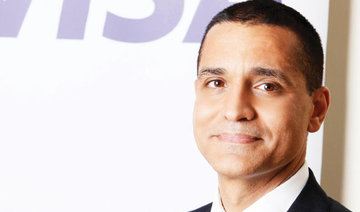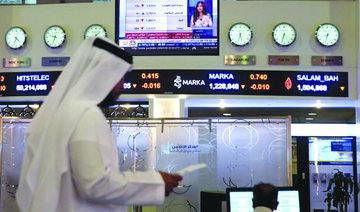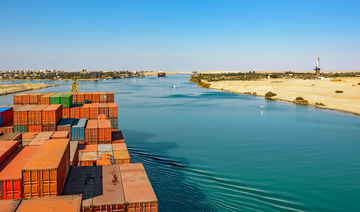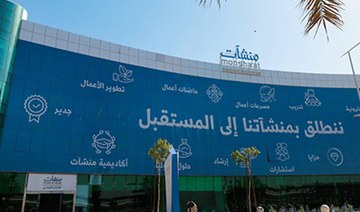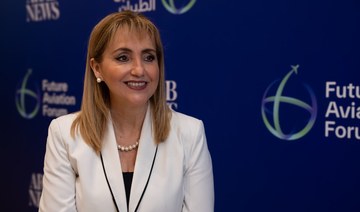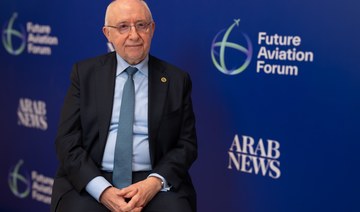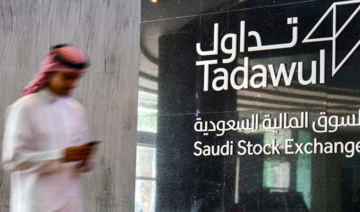DUBAI: It was business as usual at Dubai Mall on Monday as consumers shrugged off the introduction of value added tax (VAT) to indulge in one of the UAE’s favorite pastimes: Holiday mall shopping and relaxing.
The mall, which claims to be the biggest in the world by footfall (the number of people entering it), was thronged on New Year’s Day, despite the 5 percent price hike that appeared to be pretty universally applied.
Retail assistants reported that there was little difference between business on Dec. 31 — when prices were in theory 5 percent lower — and Jan. 1 after the imposition of VAT. Many retailers appeared to be willing to absorb the increase, at least on small-ticket items, for the time being.
At the upmarket home-appliances store Dyson, an assistant explained: “This is Dubai, and people love to shop. They do not care about 5 percent, but it might be different when goods go back to full price later this month.”
The festive season coincides with the month-long Dubai Shopping Festival (DSF), when retailers encourage sales by offering big discounts — up to 40 percent — off normal prices. The impact of VAT would become more apparent after this promotional period closes at the end of January, the assistant explained.
But Dubai Mall, run by the real estate developer Emaar, was as hectic as usual on New Year’s Day. By early afternoon, parking in the Fashion Avenue sector could only be had on the ninth floor of the huge car park, and as the afternoon wore on the mall became increasingly packed.
Some retailers had foreseen a dampening of demand because of the VAT rise, and were willing to offer discounts to offset the new sales tax. In the LG electronics shop, a new top-of-the-range line of mobiles came with a discount of around 10 percent. The store was busy, but not packed.
It was a different story across the walkway in Sharaf DG, where the new iPhone X was on sale at 4,965 dirhams ($1,352), compared to a price of 4,729 dirhams on New Year’s Eve. Haggling for a discount to compensate for the VAT rise was counterproductive.
“We can sell the new phone for top price,” the assistant explained. He did, however, offer a significant discount on the less popular iPhone 8.
In the Kinokuniya bookshop, a receipt for two books totalling 168 dirhams was headed “tax invoice,” and had a separate line for “VAT inclusive 5 percent”, totalling 8 dirhams. “Everybody is asking for the receipt. Maybe they want it as a souvenir,” the counter assistant joked.
The bookshop, the biggest in the UAE and one of the most popular in the Middle East, appeared to be doing a brisk trade, with families prominent among shoppers.
Some stores selling goods that might be considered for VAT exemption — like the Ortopedia children’s shoe store selling specialist footwear — had already increased prices by 5 percent. “There were a lot of people buying yesterday ahead of the increase,” the assistant said.
Some foodstuffs are also VAT exempt in the UAE, but that does not extend to food regarded as falling under the category of “discretionary spending.” A bag of cheese crisps in a mini-market in the mall was unchanged in price at 2.50 dirhams, but the receipt showed that included 13 fils as VAT. The store had declined to impose the full charge of 2.63 dirhams, which in any case would have been difficult to pay given the lack of coinage at such small denominations.
The shrewd shopper could even pick up huge bargains, regardless of the new tax. In Jimmy Choo, the glitzy women’s shoe shop, the assistant explained that prices were unchanged because management was still considering the timing of passing the increase on to consumers.
So a pair of glitzy shoes with 10cm heels with gold-painted leather, and encrusted with huge stones on chains, could still be found with a price tag of 8,000 dirhams, rather than the official post-VAT price of 8,400 dirhams.
“But we’re offering a 40 percent discount during the DSF. You can have them for 4,500 dirhams,” the assistant said.
Business as usual at Dubai Mall as shoppers shrug off VAT hike
Business as usual at Dubai Mall as shoppers shrug off VAT hike
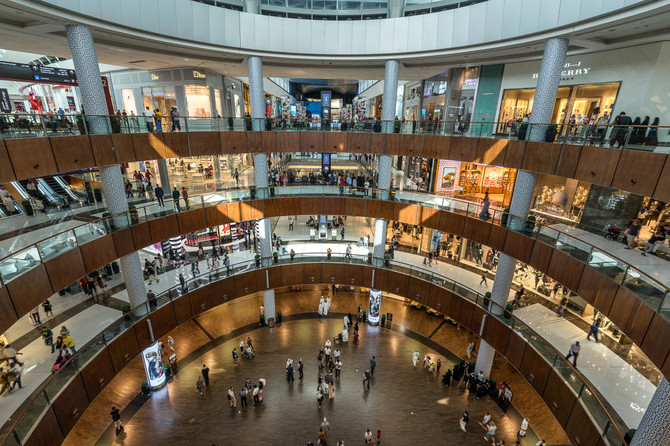
Egyptian merchandise exports reach $13bn in first 4 months of 2024
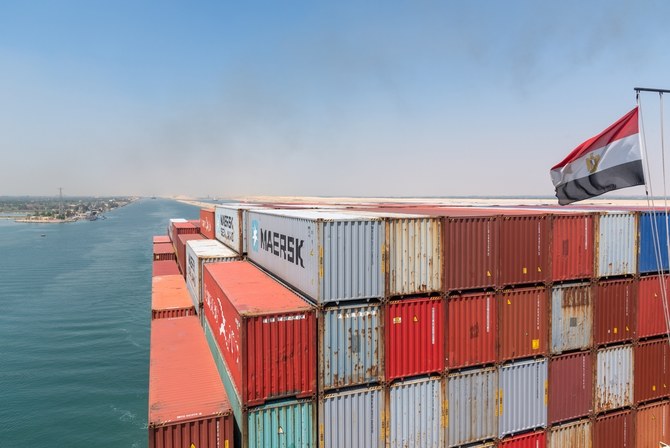
RIYADH: Egyptian merchandise exports reached $12.91 billion during the first four months of 2024, reflecting an annual 10 percent increase.
The country’s Minister of Trade and Industry, Ahmed Samir, highlighted that this continuous rise in merchandise exports has persisted for the fourth consecutive month, according to an official announcement.
The ministry aims to further increase exports from all production sectors to various global markets in the upcoming phase.
This strategy involves a concerted effort by the authority, its affiliated bodies, the business community, and Egyptian exporters to enhance the quality and competitiveness of Egyptian products both locally and globally. This will contribute to the state’s target of achieving $100 billion in annual merchandise exports.
Saudi Arabia emerged as the largest market for Egyptian merchandise exports during the first four months of 2024, with a value of $1.1 billion compared to $993.6 million during the same period in 2023.
Turkiye followed with $1.08 billion compared to $900.5 million, Italy with $793.1 million to $785.5 million, and the UAE with $735 million to $460 million. The US stood at $716.2 million compared to $587.1 million.
The main sectors forming the structure of Egyptian merchandise exports during this period included building materials worth $2.88 billion, food industries worth $2.10 billion and chemical products and fertilizers worth $1.98 billion, as well as agricultural products worth $1.77 billion, engineering and electronic goods worth $1.70 billion, and ready-made garments worth $855 million.
Key export items that increased from January to April 2024 included fresh and dried citrus worth $767 million, gold worth $650 million, and nitrogen fertilizers worth $588.5 million.
Saudi Monsha’at and Social Development Bank ink deal to boost SME financing

RIYADH: Saudi small and medium enterprises are set to receive a finance boost thanks to a new deal signed by the Kingdom’s Social Development Bank.
The cooperation agreement, inked with the country’s SME general authority, also known as Monsha’at, will see the authority joining the bank’s Entrepreneurs Program, the Saudi Press Agency reported.
This collaboration aims to provide the necessary financing solutions and facilities for the growth of SME projects and the expansion of their businesses.
The program is a financing product aimed at supporting the assets and operating costs of new business entities in the Kingdom.
This initiative aligns with Monsha’at’s objective to bolster the growth and competitiveness of SMEs by collaborating with strategic partners from various sectors, both locally and globally. The goal is to create an enabling environment and foster a leading society.
Furthermore, it resonates with the bank’s vision to be pioneers in empowering social development tools and enhancing the financial independence of individuals, families, and entities toward a vibrant and productive society.
Saudi Arabia rises 9 spots in WEF’s global tourism index

RIYADH: Saudi Arabia has climbed nine spots to rank 41 on a global tourism index – marking the Gulf region’s largest improvement – thanks to its strengthening infrastructure, corporate presence, and major business centers.
According to the World Economic Forum’s Travel & Tourism Development Index report, Saudi Arabia has recorded the most significant improvement in the Middle East and North Africa region since 2019.
The WEF’s TTDI, covering 119 economies, measures the set of factors and policies enabling the sustainable and resilient development of the tourism and travel sector, which, in turn, contributes to a country’s development.
The report highlighted that the tourism sector in high-income economies within the region, particularly the Gulf Cooperation Council, benefited from several factors. These included high-quality infrastructure, such as major aviation hubs and leading airlines, the presence of large corporations and significant business centers driving travel activities, and a favorable business environment.
“In part, these efforts are reflected in broad increases in government T&T spending as a share of budgets, loosened visa requirements, improvements in the establishment and promotion of cultural resources, and the highest regional average for T&T capital spending per employee in the index,” the report added.
In the index, the UAE stands out as the top performer in the region overall and the Middle East subregion, ranking 18th. Meanwhile, Egypt, with a ranking of 61st, stands out as the top scorer in the North Africa subregion, the report revealed.
The US, Spain, and Japan hold the top three positions in the index with no change in ranking from 2019. Meanwhile, France and Australia have climbed two ranks each from 2019 to secure the fourth and fifth positions. Germany and the UK also feature in the top 10 but with a minor fall in their positions to sixth and seventh in 2024 compared to 2019. China, Italy, and Switzerland hold the remaining three positions in the top 10.
The WEF findings also pointed out that travel and tourism activities in developing economies in the region often face challenges, including less attractive business environments, safety and security concerns, and gaps in the necessary transport and tourism infrastructure.
Furthermore, many countries in the region have implemented policies and invested substantial resources to develop the tourism and travel sector. This effort aims to diversify their economies and reduce dependency on the oil and gas industry, according to the report.
Saudi Arabia is set to unveil a new tourism strategy later this year, leveraging artificial intelligence and seamless technology, Gloria Guevara Manzo, chief special adviser at the Ministry of Tourism, told Arab News on the sidelines of the Future Aviation Forum.
She added that the plan aims to enhance the Kingdom’s cultural, historical, and hospitality assets.
In 2023, Saudi Arabia’s travel sector surpassed expectations, prompting a revision of its Vision 2030 targets from 100 million to 150 million visits by 2030.
Additionally, the Kingdom has introduced regulatory changes, such as the “Visiting Investor” visa and the expansion of the GCC unified visa service, to attract more international visitors and investors.
Major projects like NEOM, Riyadh Air, and the Red Sea Project are central to these efforts, aiming to make tourism a significant revenue source by 2030.
The WEF also noted that the tourism and travel sector in the region would benefit from reducing travel and trade restrictions and making significant investments in environmental sustainability to support future improvements in natural resources.
However, it warned that the recent escalation of regional conflicts and the resultant increase in safety and security concerns pose a major external risk to future tourism development.
ICAO summit in Riyadh shows recognition of Saudi Arabia’s role in aviation sector: GACA president
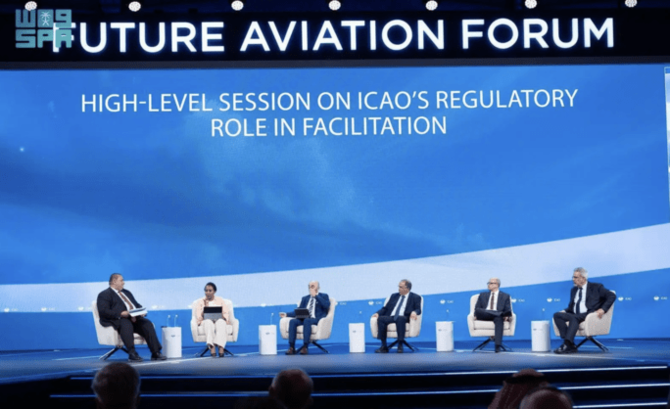
RIYADH: The decision of the International Civil Aviation Organization to host its Facilitation Global Summit in Riyadh underscores Saudi Arabia’s leading position in the sector, an official said.
Abdulaziz Al-Duailej, president of the Kingdom’s General Authority of Civil Aviation, noted that Riyadh’s selection to host the summit also recognizes the Kingdom’s outstanding contributions to the international civil aviation community.
The ICAO Facilitation 2024 Global Summit was launched in Riyadh on May 21, in conjunction with the Future Aviation Forum being held in the Saudi capital.
During the event’s opening speech, Al-Duailej highlighted that the summit is an opportunity to share various initiatives GACA has implemented in the Kingdom to elevate the passenger experience.
The gathering includes 30 speakers and more than 500 aviation experts and specialists who will discuss the industry’s opportunities and challenges.
The GACA president further noted that the authority has implemented a monitoring and inspection program to ensure that Saudi international airports comply with the standards and recommendations outlined in ICAO’s Annex 9 directives.
“Annex 9 — Facilitation is based on 10 articles of the Chicago Convention which require that the civil aviation community comply with laws governing the inspection of aircraft, cargo and passengers by authorities concerned with customs, immigration, agriculture and public health,” according to the ICAO website.
It added: “Under the Convention, States are obligated to adopt standards and expedite the necessary formalities in order to minimize operational delays.”
Al-Duailej pointed out that Saudi Arabia is cooperating with international aviation authorities and continuing its investments in advanced safety technologies to provide passengers transiting the Kingdom’s airports with a smooth travel experience.
For his part, Salvatore Sciacchitano, president of ICAO, said that the summit will empower aviation mechanisms globally.
Speaking to Arab News on May 21, Sciacchitano said that Saudi Arabia is a “model” for sustainable practices in the aviation sector, as the Kingdom’s growth in the industry aligns with global standards.
He also predicted that global air traffic will reach 11.5 billion by 2050, up from the current 4.6 billion.
Sciacchitano added that the technological revolution will accelerate the aviation sector’s growth, allowing the world to accommodate more airplanes in the sky and more space on the ground.
GCC banks’ net profit surge 10.5% to 14.4bn: Kamco Invest
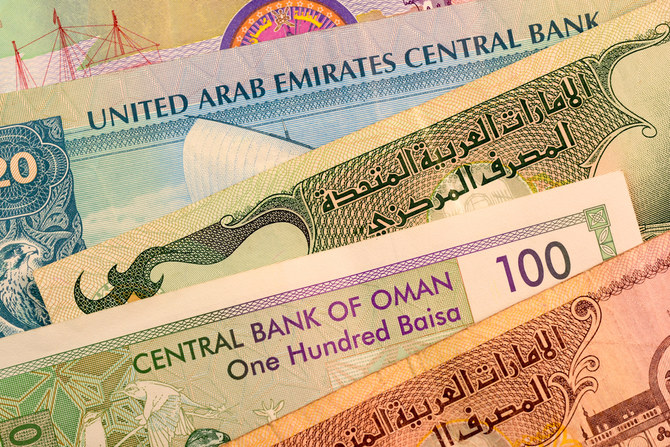
RIYADH: Net profit of banks in the Gulf Cooperation Council region surged by 10.5 percent year-on-year in the first quarter of 2024 to $14.4 billion, an analysis showed.
In its latest report, Kamco Invest said that the bottom line performance of these banks also witnessed a rise of 11.8 percent in the first quarter compared to the previous three months.
The study added that an increase in lending continued in the region despite higher borrowing costs.
“The strong growth came despite a fall in revenues during the quarter and reflected a fall in total operating expenses coupled with a steep fall in quarterly impairments,” said the asset management company.
According to the analysis, banks in Saudi Arabia registered the most robust growth in the first quarter of 2023 at 3.3 percent, while gross credit data for UAE banks showed an increase of 1.1 percent during the first two months of the year.
“Data on listed banks showed gross loans reaching a record high of $2.02 trillion at the end of the first quarter of 2024, registering a quarter-on-quarter growth of 1.8 percent while aggregate net loans reached $1.92 trillion after a sequential growth of 2.3 percent,” the report added.
Kamco Invest revealed that customer deposits grew at a much stronger pace during the quarter as depositors eyed higher interest income.
The report noted that total customer deposits in the GCC region reached $2.45 trillion at the end of the first quarter after witnessing the most extensive quarter-on-quarter growth in for a year at 2.8 percent.
However, in the first quarter, the total revenue of listed banks in the GCC region fell for the first time in 12 quarters to $31.4 billion due to the impact of elevated interest rates.
According to the analysis, the first quarter registered a flattish gain in total interest income, reaching $50.5 billion, with the yield on credit averaging at 4.3 percent, in line with the trend over the last three quarters.
However, the continued rise in interest expenses, which reached $29.3 billion for the quarter, more than offset the growth in interest income
On the other hand, aggregate non-interest income declined for the first time in six quarters during the first quarter to reach $10.2 billion, from $10.7 billion in the last three months of 2023.
“Non-interest income also witnessed a decline during the quarter after a fall in other interest income more than offset a growth in management fees and commission income during the first quarter of 2024,” the report added.


